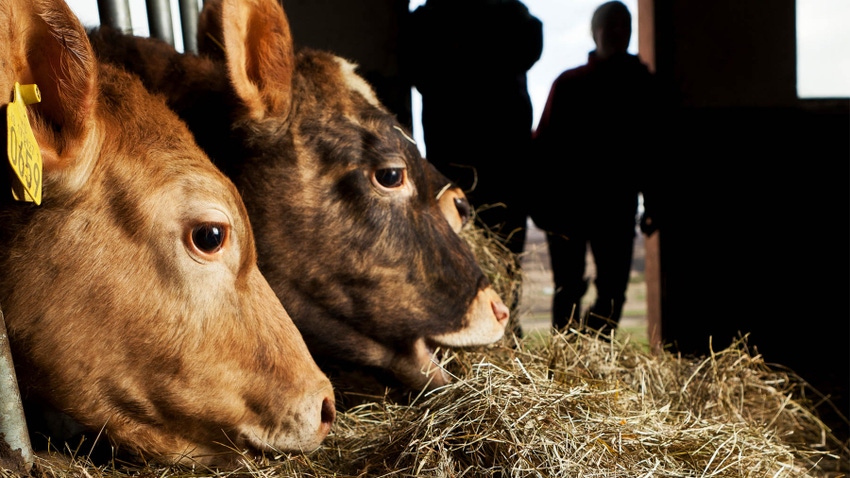8 Tips to stretch short hay supplies
Keep hay off the ground on a surface that will allow water to drain away.
February 8, 2024

By Dr. Jeff Lehmkuhler, University of Kentucky
Did you go to feed your cattle and realize the hay supply is dwindling fast? Check out these 8 tips to stretch limited hay supplies. For additional information contact your local Extension agent. It is recommended to consult with your feed nutritionist or County ANR Agent before making drastic changes in your feeding program.
Inventory hay: Know how much hay you have available; weigh a few bales to get an average weight or estimate the weights based on available information from Extension publications.
Minimize storage losses: Keep hay off the ground on a surface that will allow water to drain away; keep bales covered or stored inside a barn; if bale grazing limit the number of bales placed in the field to provide 2-4 weeks of feeding to reduce weathering losses.
Reduce feeding loss: Consider minimizing feeding losses; using hay rings with skirts / metal on the bottom, tapered ring designs, chains to suspend bales, or cone inserts to keep hay inside the feeder has been proven to reduce hay feeding losses compared to hay rings with openings at the bottom; using an electrified temporary poly-wire placed down the center of unrolled hay will reduce losses from cows laying on the hay, trampling it into the mud, and defecating on the hay; feeding processed hay into a bunk or large industrial tire reduces waste compared to feeding processed hay on the ground.
Cull: Consider selling less productive females, open cows, and cows with structural/functional issues to reduce the number you must over winter; consider selling the bull as the market may provide the opportunity to sell a mature bull and replace him with a younger bull next spring.
Limit time access to hay: Research has shown dry cows in mid-gestation can be maintained on good quality hay when they have restricted access time to only 6-8 hours a day; the hay savings comes from less waste as feeding behavior is altered; all cows must be able to access hay at any given time; this is not recommended young or thin cows, lactating cows or growing animals.
Substitute hay with grain: Calories and protein can be provided from supplements; grain/commodity mixes can be used to replace hay; cows can be maintained on a low hay diet by using grain supplementation that balances the nutrient supply and animal requirements; consult a nutritionist before making extreme feeding changes.
Deworm young animals: Animals with an internal parasite burden will have reduced efficiency.
Feed an ionophore: If grain supplementation will be used, consider adding an ionophore to increase the energy efficiency of the feed consumed. Consult your nutritionist to discuss inclusion rates and developing a supplement program. Previous work has shown that feeding 200 mg of monensin allowed cows to maintain body condition on 10-15% less hay.
Source: University of Kentucky
You May Also Like


.png?width=300&auto=webp&quality=80&disable=upscale)
